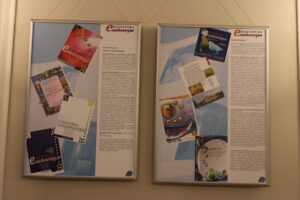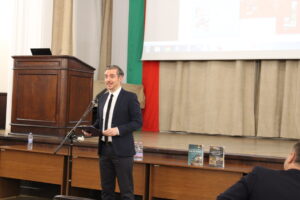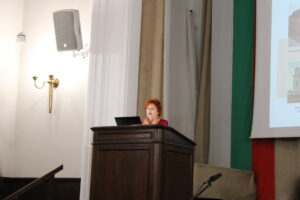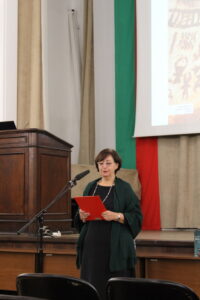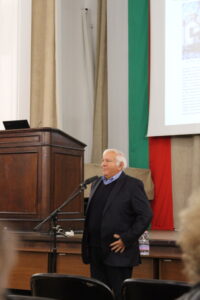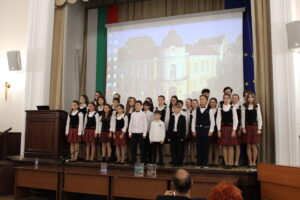Encyclopedia “Holy Places of Bulgaria” was officially presented with an event in the hall “Prof. Marin Drinov” of the BAS. The director of the National Center “Bulgarian Encyclopedia” Victoria Lazova, the manager of the “Knigomania” publishing house Iliyan Andonov, the editor-in-chief of the encyclopedia Academician Vasil Nikolov, the leading editor of the publication Arch. Tania Kadiyska, as well as authors, consultants and collaborators involved in the writing and preparation of the encyclopedia. The mood of the audience during the official presentation of the book with presenter Daniel Nenchev was taken care of by the children from the popular choir “Pim-Pam” with conductor Irena Hristova, who performed songs to the music of the composer Boris Karadimchev.
Encyclopedia “Holy Places of Bulgaria” is the first edition of its kind that offers systematized popular science information about places related to the spiritual needs of society from prehistory to the present day. More than 600 objects are presented with independent articles – prehistoric sanctuaries, unique monuments related to the beliefs of the Thracians, ancient Greek and ancient Roman temples, the first cult buildings of pre-Christian Bulgaria, Christian churches and monasteries, Muslim and Jewish cult buildings. A glossary of terms, information on gods, saints and prophets mentioned in the encyclopedia, and an index of sites by area, useful for cultural tourism enthusiasts, are included to assist readers.
From the encyclopedia you can learn interesting information about dolmens, the beliefs of the Thracians, ancient temples, the differences between the Orthodox Church and the Catholic Church, what the iconostasis is and how it has changed over the centuries, who are the holy lamps in the Jewish religion and who is their prototype, and much more others.
Sacred places associated with various cult practices, religions and beliefs occupy a large share of the cultural heritage of our country. Some of these places are still revered today, others are objects of cultural tourism and attract visitors with their merits as artistic and architectural masterpieces of timeless importance. Interest in the subject has grown significantly in recent years, especially in the sites that are not widely known due to a lack of sufficient information – megalithic sanctuaries, pagan temples, Thracian cult facilities, early Christian basilicas, etc.
The main share of the publication falls on Orthodox churches and monasteries, but it also includes a wealth of information on Islamic and Jewish cult buildings. The book would be an integral part of the library of every Bulgarian family, as the texts are suitable both for schoolchildren and students, as well as for those tempted by the topic of the spiritual heritage of the territory of Bulgaria and specialists in the fields of culture, tourism, history, theology, archaeology, or in general – humanitarian studies.
“The book is a continuation of the traditions in the publishing policy of the “Bulgarian Encyclopedia” to promote various aspects of the rich artistic and spiritual culture of the people who inhabited the Bulgarian lands over the centuries, as well as the related real cultural values. The extensive volume also publishes information about archaeological sites, which has not been included in popular science books so far,” commented Victoria Lazova.
“Encyclopedia of the Holy Places of Bulgaria” was created on the basis of the rich textual and illustrative archive of the Scientific Information Center “Bulgarian Encyclopedia”, updated and supplemented according to the concept of the publication. The scientific credibility of the facts, the selection of the objects, the rich illustration and the encyclopedic presentation of the information are contributed by our authors, consultants and collaborators, including prominent scientists from the BAS, higher schools and institutes, archaeological and historical museums, community centers, etc. institutions, as well as the team of scientific editors of the “Bulgarian Encyclopedia”, which produced the edition”, says Tanya Kadiyska.


